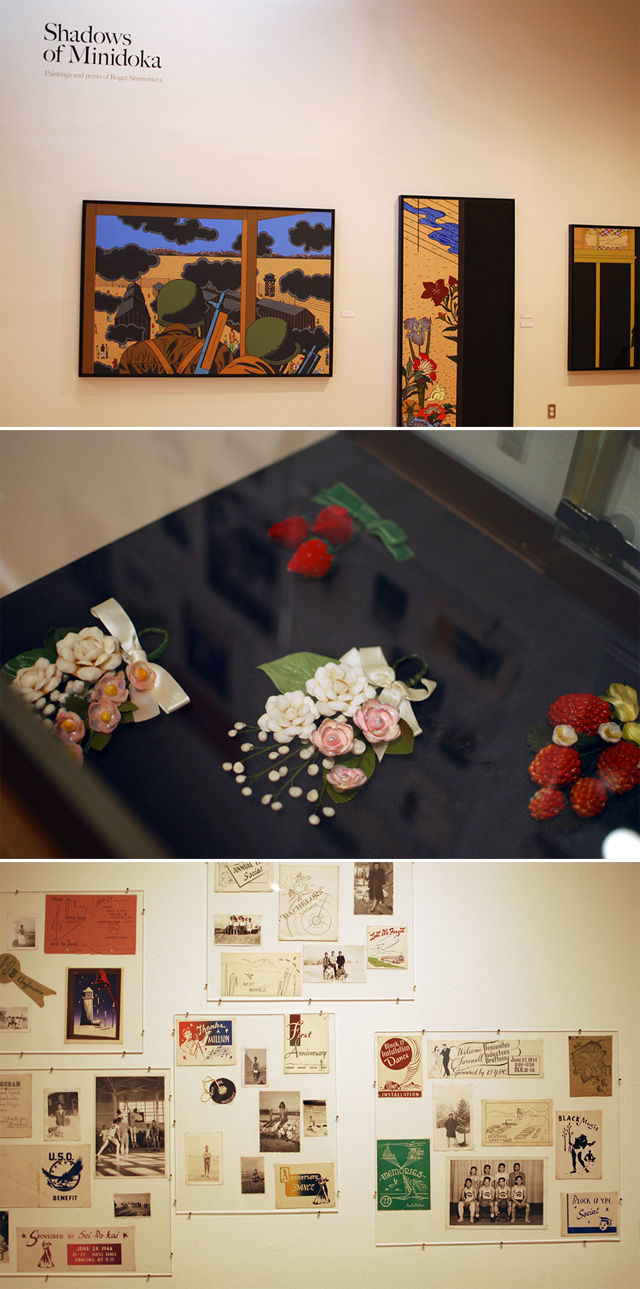 |
| top: view of Roger Shimomura's show. middle and bottom: Shimomura's collection of artifacts created and saved from internees. |
This week I have attended two interesting events:
On Tuesday I went to a moku hanga demonstration given by KU visiting artist Katie Baldwin. She studied the method in Japan from master carvers and printers. Moku hanga is a slow and methodical technique, with certain steps of carving a wooden block. Then handmade watercolor (which I love!) is brushed rather than rolled onto the raised areas. It makes a beautifully soft print. The precision, focus, materials and practice are very intriguing to me. And while I'm not sure how much I want to carve right now (but you never know), I do like the idea of using the handmade watercolor in that way. So yesterday I conducted a few experiments on my own, but nothing to share yet.
Then last night Roger Shimomura gave a lecture on his current show Shadows of Minidoka at The Lawrence Arts Center. He spoke of the more than thirty-five works from his internment series and his personal collection of artifacts on display. During WWII Roger (who was a young child at the time) and all of his family were sent to an internment camp in Idaho called Minidoka. While he says the paintings are not representations of his own memories, it was in the camp that his first memories of life began. It was personally interesting to hear perspectives that were quite different from those I grew up hearing from my grandparents. Read his statement to learn more.
